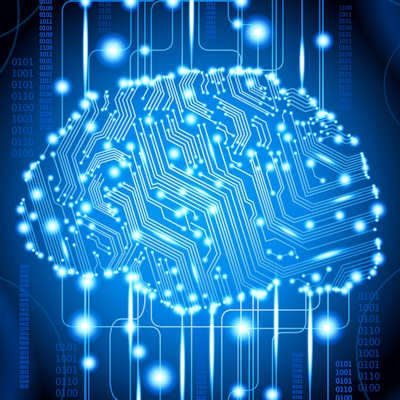
Every year, the well-known technology analyst firm Gartner releases its predictions on the growth -- or shrinkage -- of certain technologies, from 3D printing to customer relationship management systems (CRM). This "hype cycle" is well-named; some technologies vanish within years of being named, while others become indispensable. It's unsurprising that artificial intelligence (AI) has its very own hype cycle.
It's similarly unsurprising that the medical community is fragmented on its opinion of AI. An Italian team recently predicted that AI would change radiology as much as x-ray did in 1895.1 Others, like Dr. Raym Geis, disagree, saying that the hype of AI may not live up to its promises.2
The truth, of course, lies somewhere in between. AI does have the capability to fuel the next technology revolution in healthcare. It will have a significant impact, like the invention of x-ray, CT, and MRI, which were all advances that were shepherded in by radiology. There is no better group within healthcare to usher in this next revolution -- but AI's adoption and development depend on the people driving it. Machines (at least today) are not very smart on their own, but there is significant advancement potential by combining augmented intelligence with the experts in healthcare today.
 AI promises to relieve the pressure on clinical radiologists.
AI promises to relieve the pressure on clinical radiologists.There's a very clear need for this advancement. Taking stroke as an example, it is projected that there will be 3.4 million stroke victims by 2030 in the U.S. alone, which will cause loss or extreme hardships for patients and their families, while generating $240 billion (212 billion euros) in total direct and indirect costs.
If we can just deflect one patient per hospital in the U.S. and in countries that use the CE safety mark, ("one patient to wellness, one patient that isn't debilitated for life"), a cost saving of $2 billion (1.76 billion euros) would be the outcome. More importantly, it's about 13,000 lives that return to a productive state and return to their families intact. The impact on Europe and more broadly across the globe could be vast.
Deployment of AI in radiology departments
Similarly, radiology departments are under pressure, but that could be relieved by smart AI. There is less funding for healthcare today, more patients, and less time to treat everyone. AI has the clear potential to support this, and a perfect example is the emergency room department, which must triage incoming patients and make decisions as quickly as possible.
In the case of a suspected stroke or head trauma patient, the clinical team must rapidly identify whether the person is experiencing an ischemic stroke or a hemorrhagic stroke and then determine the most appropriate treatment pathway in a very short time. This requires a rapid and much deeper picture of the patient, concurrently considering all aspects of the patient.
Software exists that utilizes deep-learning technologies to automatically analyze noncontrast head CT images. The expert-level results provide powerful and actionable data in minutes that enable physicians across the world to make faster and more accurate assessments of stroke and head trauma in any location, at any time.
Similarly, a medical company in New Zealand is conducting trials involving the use of AI within a radiology team to help detect prostate cancer faster, helping to analyze image data.3 Ever-evolving algorithms can quickly analyze and provide information -- and, more importantly, answers -- adding signal rather than background noise to the diagnostic process. Finally, computer-aided screening, deployed in the context of pulmonary nodule detection,4 was used by a U.S. team in Iowa to improve sensitivity from 63.8% to 92.7%, showing that machine learning can absolutely help to improve the detection of very early signs of cancer.
All these steps are the first, incremental steps, but, in time, it will be feasible to characterize all aspects of the patient's condition and provide a prognosis and treatment recommendations. This is the future.
Future of AI in healthcare
AI is already part of our lives and changing consumer behavior, retail experiences, and how we consume entertainment. However, one of the main challengers in healthcare is turning the data -- gathered from disparate sources -- into information and actions that are grounded in truth. This is not a simple challenge; at a technical level, data providers need to ensure that data can be integrated in a fashion that is responsible, simple, and secure.
 Gene Saragnese is the chairman and CEO of MaxQ AI.
Gene Saragnese is the chairman and CEO of MaxQ AI.Specifically, true diagnostic expert-grade AI-enabled solutions solve an acute problem that liberates cost and improves clinical outcomes. Instead of more data and analysis, AI will provide support tools that give radiologists answers while seamlessly integrating into current workflow, PACS, medical imaging hardware, and healthcare clouds.
AI as a technology is remarkable, and it will revolutionize healthcare and allow us to raise the level of care in all hospital settings -- from rural community hospitals to clinics in developing nations -- to the very highest level of care.
Gene Saragnese is the chairman and CEO of MaxQ AI, a clinical diagnostics intelligence platform company developing AI-powered solutions.
References
- Pesapane F, Codari M, Sardanelli F. Artificial intelligence in medical imaging: threat or opportunity? Radiologists again at the forefront of innovation in medicine. Eur Radiol Exp. 2018;2(1):35. https://eurradiolexp.springeropen.com/articles/10.1186/s41747-018-0061-6. Accessed on 3 January 2019.
- Ryland-Monk F. Why AI's not ready for routine adoption. AuntMinnieEurope.com. https://www.auntminnieeurope.com/index.aspx?sec=sup&sub=pac&pag=dis&ItemID=616606. 14 November 2018. Accessed on 3 January 2019.
- Shepherd S. NZ radiology centres to trial AI diagnosis. Newshub.com. https://www.newshub.co.nz/home/lifestyle/2018/06/nz-radiology-centres-to-trial-ai-diagnosis.html. 13 June 2918. Accessed on 3 January 2019.
- van Beek EJ, Mullan B, Thompson B. Evaluation of a real-time interactive pulmonary nodule analysis system on chest digital radiographic images: A prospective study. Acad Radiol. https://www.ncbi.nlm.nih.gov/pubmed/18423313. 2008;15(5):571-575. Accessed on 3 January 2019.



















